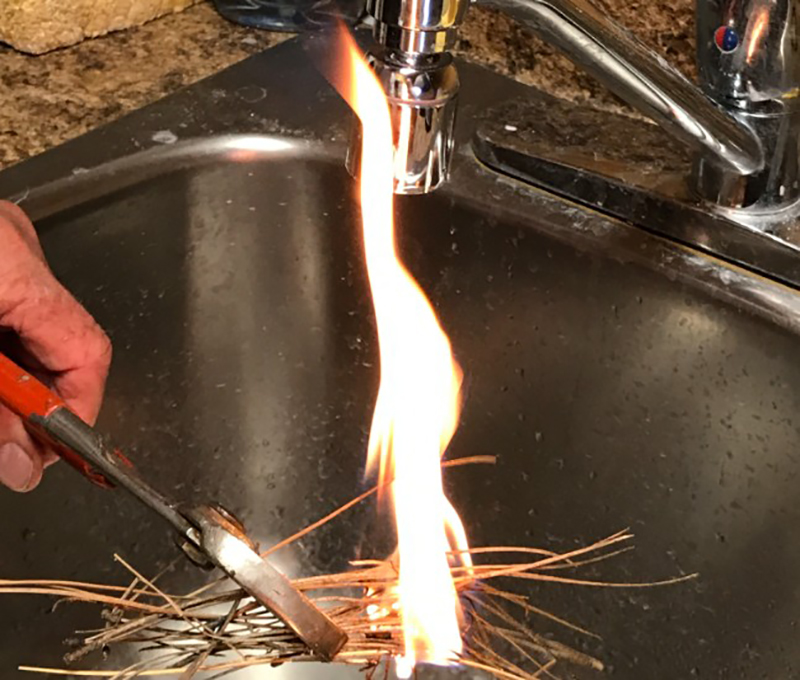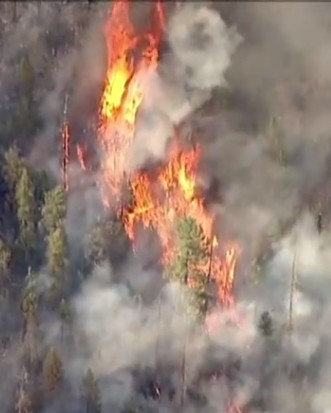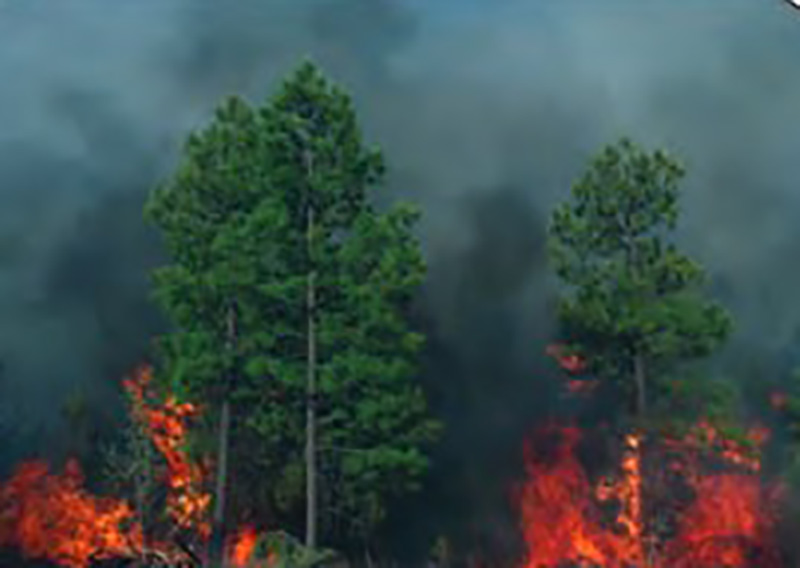Firewise
Why are we Firewise?
As a result of the recent Tinder Fire there has been a flurry of Firewise activity. We all understand that thinning, laddering and raking are necessary to keep our houses from burning down, but do we really understand how each of these activities function to keep us safe?
For thousands of years before man came to the Mogollon Rim, the forest looked something like this picture, which was taken in our forest about a quarter-mile north of Starlight Drive and Ute Circle.
For all those years, there was a master gardener at work– thinning, laddering, clearing the ground, and fertilizing the soil. That very efficient gardener was fire. But when humans moved to the Rim, they arrested fire until they realized the consequences of not allowing fire to do its job. Now we have controlled burns, but of course in populated areas we must do fire’s job. We must thin our trees, limb them up, and mow the grass as well as rake the ground to remove the fire fuels. If we don’t, fire will do it for us.
Thinning
Tightly packed trees are like kindling. You don’t start a fire with a single piece of kindling. It takes several pieces closely spaced to ignite your logs. Like kindling, tightly packed trees burn much hotter, and in a fire all will perish, not to mention any nearby house or other structure. This picture of what used to be a beautiful home on the east side of Clear Creek Drive, shows what tightly packed trees look like after fire pays them a visit.
If the trees had been properly thinned and laddered and the ground raked, this neighbor would probably still have his trees and his home. Ponderosa pines have evolved to live with fire. In their natural state large trees tower above the flames of periodic ground fires caused by lightning and are not adversely affected. Unless pine trees are subjected to the kindling effect of overcrowding, neither their trunks nor their green needles are easily ignited.
Another reason to thin your trees is that thick stands of young trees are irresistible to the Bark Beetle that carries a fungus in its saliva, which kills the Ponderosa pine. However, if the thick stands of young trees are removed, the Bark Beetle isn’t drawn to the mature trees (nps.gov).
Laddering
Laddering is the removal of anything that could provide a ladder for flames to climb into the crowns of the trees, including low hanging limbs and smaller trees near or beneath the crown of larger ones. Ground fires typically burn at less than 400 degrees centigrade or 752 degrees Fahrenheit. When the flames are able to climb into the crowns of the trees, the rising heat creates a vacuum, sucking in great quantities of oxygen and creating a fire that is more than three times as hot and a much greater danger to any nearby man-made structure. In the picture below, taken from an aerial video of the Tinder Fire, a very large pine, whose green needles would normally be somewhat resistant to fire, had no defense against this massive blast of flame at more than 2000 degrees; it was totally consumed and left a smoldering skeleton in literally 5 seconds. The picture reveals the flames climbing the ladder of smaller trees to bring about the firry destruction of this ancient pine. There is good reason to ladder our trees!
Raking
Fires start on the ground. If a fire does come to your home, it will probably come on the ground. If a glowing ember, blown by the wind, were to land on your property, would it find anything to ignite? The answer is probably yes. Pine needles were born to burn. Dead pine needles, like the ones that fall from your trees, have evolved to become very efficient at starting a fire from a lightning strike and cleaning up the forest floor as they burn. According to the USDA publication, “Living With Wildfire,” ground fires in ponderosa pine forests have a flame length of ten feet, as illustrated by this picture. The fire in the picture was probably fed by a thick layer of pine needles. But, what if we have just a thin layer of needles in our yard? Just how vigorously can those needles burn? The picture below shows a flame, at least a foot high, created by about 10 needles. It is hard to imagine anything that would burn with more virulence.

Some day that monster Wildfire will again rear its ugly head in our community. Hopefully, it will find that we have all shared in the responsibility of keeping our lots Firewise. If we haven’t, we will surely share in its flames. If you have questions about our Firewise program, please contact us or view the documents below.




